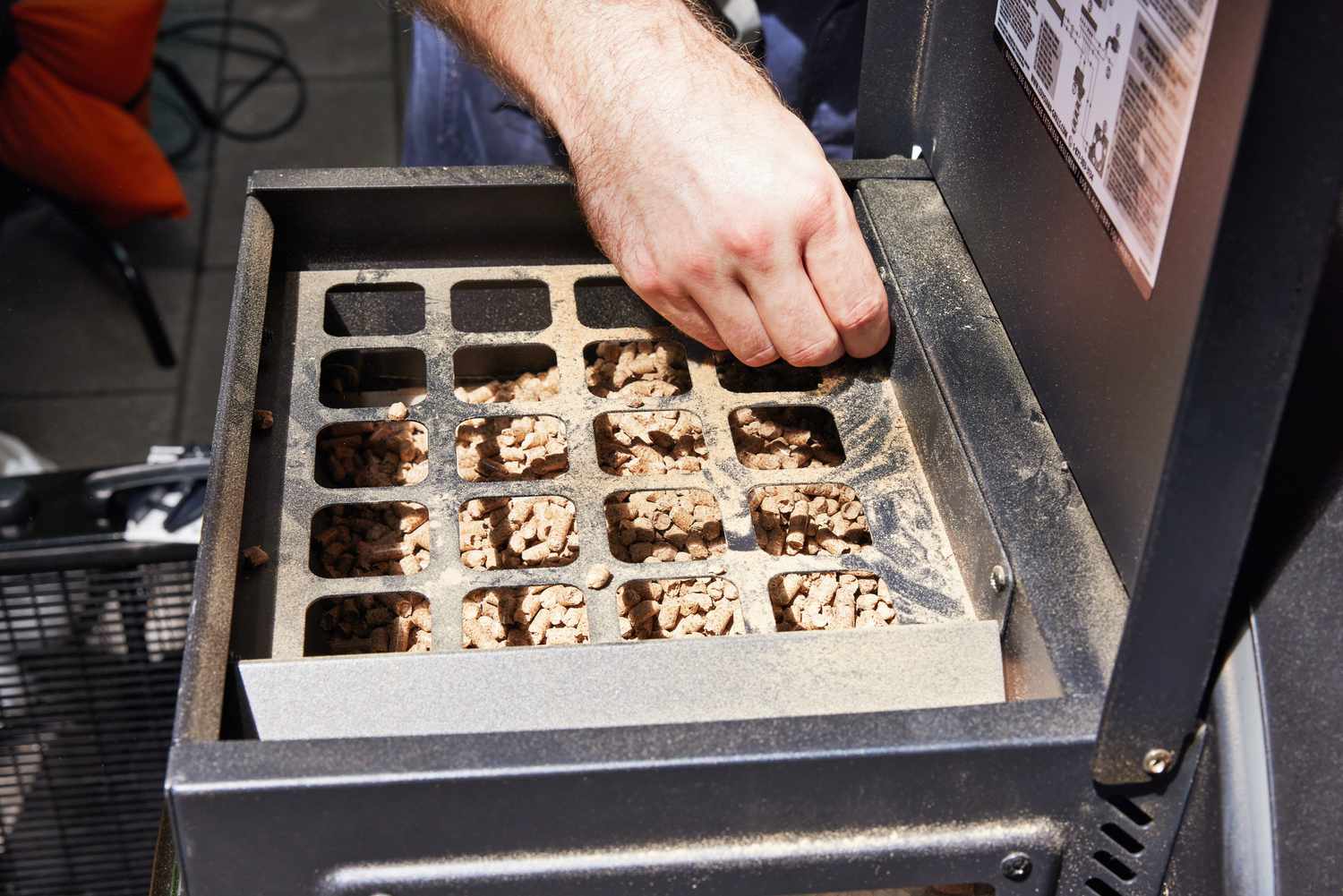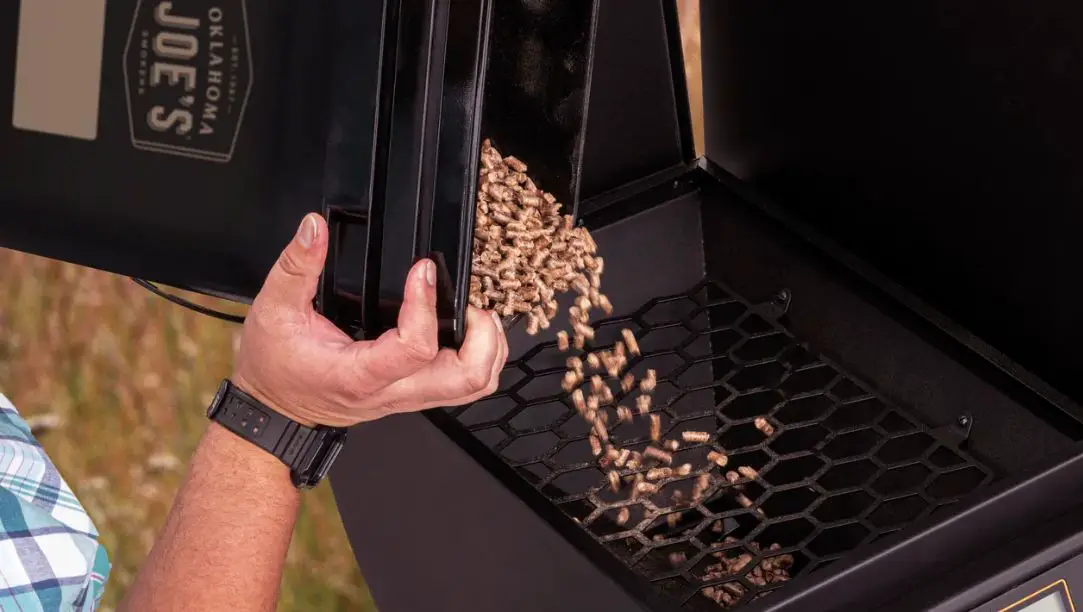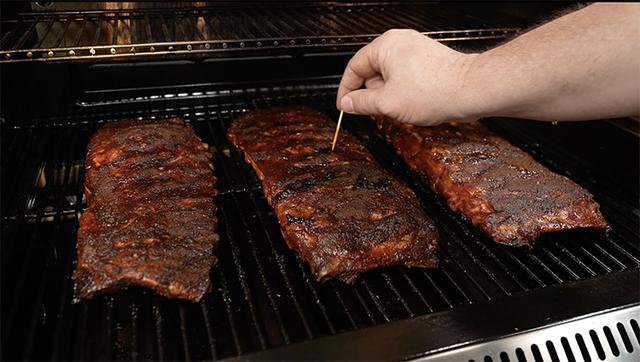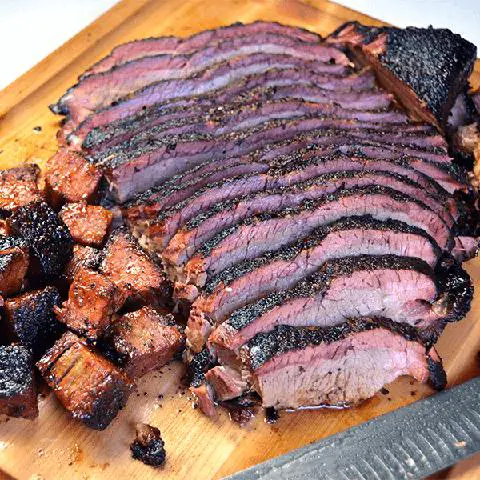
“Efficient and Reliable Pellet Storage Solutions: Ensure Optimal Heating with our Innovative Systems”
Wood Pellet Storage: 4 Practical Options Explained
When it comes to storing wood pellets for your pellet grill, there are several practical options that can be considered. The most common and cost-effective method is to store the pellets in the original plastic packaging they come in. Simply roll the bag closed and keep it away from areas that are prone to temperature and moisture changes. Despite what some articles may claim, storing wood pellets in their original packaging is a reliable option, even in regions with fluctuating weather conditions.

While some manufacturers and articles may advise against storing pellets in their original bags due to potential moisture ingress, this concern can be easily addressed by storing the bags in a cool dry place within your home. Additionally, using inexpensive potato chip bag clips can help ensure that the bags stay securely closed. There is no significant difference between these clips and those specifically marketed for pellet bags.
Another option for wood pellet storage is using plastic buckets, such as Home Depot Homer buckets. These buckets are affordable and can be used to store pellets without the need for additional accessories like mesh filters or scoops. This eliminates the need to purchase overpriced specialized pellet buckets that often include unnecessary features.
Lastly, if you have a pellet grill with a hopper capacity of 20 lbs (the weight of a typical bag of pellets), you can simply dump the entire bag into the hopper and use it as storage. Any remaining pellets can be rolled up in their bag and stored separately in a garage or other suitable location.
How to Store Your Wood Pellets
When it comes to storing wood pellets, the best option is to keep them in the original plastic packaging they come in. Roll the bag closed and store it in an area that is less prone to temperature and moisture changes. Contrary to what some articles and pellet grill manufacturers may advise, storing your pellets in the original packaging does not typically lead to moisture ingress issues.
If you live in an area with extreme temperature and moisture swings, such as New England, you can store the bag of pellets in your house in a cool dry place. There are products available specifically for plastic wood pellet bags, but these are often overpriced gimmicks. Instead, you can use potato chip bag clips to keep the bag closed securely.
In terms of storage containers, there is no need to invest in expensive plastic buckets marketed specifically for pellets. Regular plastic Home Depot Homer buckets work just as well at a fraction of the cost. Additionally, most pellet grills have hopper capacities that can function as storage for a typical 20 lb bag of pellets. Simply dump the bag into the hopper and roll up any remaining pellets for storage.

1. In the Original Plastic Packaging
The best way to store wood pellets is in the original plastic packaging they come in. Roll the bag closed and keep it away from areas prone to temperature and moisture changes. Many articles and pellet grill manufacturers will advise against this due to the potential for moisture ingress, but personal experience has shown that storing pellets in their original packaging can be successful even in fluctuating weather conditions.
If you’re concerned about the bag not staying closed when rolled up, you can use potato chip bag clips or similar alternatives to secure the end of the bag. These clips are inexpensive and readily available at grocery stores or discount stores.
Instead of purchasing overpriced pellet buckets with additional features like mesh filters and scoops, using plastic Home Depot Homer buckets can be a more cost-effective option. These buckets are durable and can easily store a typical 20 lb bag of pellets.
If your pellet grill has a hopper with sufficient capacity, you can simply dump the entire bag of pellets into it for storage. This eliminates the need for additional containers or buckets.
In addition to choosing a storage method, it’s important to consider environmental factors that may affect the storage life of your wood pellets. Wood is hygroscopic, meaning it gains or loses moisture when exposed to air, so storing pellets in a cool, dry place or allowing air circulation is recommended. It’s also crucial to keep plastic bags off the ground to prevent moisture absorption through porous surfaces like concrete or dirt.
Biomass products like wood pellets are flammable, so they should be kept away from open fires or heat sources. For a more long-term storage solution, a simple plastic bucket with a lid can suffice.
2. Using a Bag Clip
If you have concerns about the original plastic packaging not staying closed when rolled up, you can use a simple bag clip to secure it. Instead of spending $30+ on a bag clip specifically designed for wood pellet bags, you can use a potato chip bag clip that costs around $0.50 per clip or $5-10 for a 10-20 pack. In my experience, there is no difference between these clips and the ones marketed for pellet bags.
By using a bag clip, you can ensure that your pellets stay sealed and protected from moisture ingress. This method is cost-effective and practical, allowing you to store your pellets in their original packaging without any issues.
3. Stored in a Plastic Bucket
Another practical option for storing wood pellets is to use a plastic bucket. While some companies sell overpriced pellet buckets with additional accessories, such as a mesh filter and scoop, a simple plastic bucket from a home improvement store like Home Depot can do the job just fine. These buckets are much more affordable, costing only around $5. You can easily pour the pellets from their original packaging into the bucket, which can hold up to 20 lbs of pellets, the same weight as a typical bag of pellets. If you’re concerned about moisture, make sure to keep the lid tightly closed and store the bucket in a cool and dry place.
Storing your wood pellets in a plastic bucket offers convenience and cost-effectiveness. It eliminates the need for expensive storage solutions promoted by grill manufacturers or other websites. By using a simple plastic bucket, you can efficiently store your pellets without spending unnecessary money on gimmicky products.
4. In the Pellet Grill’s Hopper
The hopper of a pellet grill can actually serve as a storage option for your wood pellets. Most pellet grills have a hopper capacity of 20 lbs, which conveniently matches the weight of a typical bag of pellets. Simply dump the bag into the hopper and if there are any leftover pellets, roll up the bag and store it in a cool, dry place like your garage or barn. This method eliminates the need for additional storage containers or buckets.
It’s worth noting that in the past, pellet grills did not have pellet chutes, making it impossible to remove pellets from the hopper. However, with recent advancements in grill technology, this is now possible. So take advantage of your grill’s hopper as a convenient and efficient storage solution for your wood pellets.
Factors to Keep in Mind When Storing Pellets
1. Environmental conditions: The storage life of wood pellets is greatly affected by the humidity and temperature of their surroundings. Pellets should be stored in a cool, dry place or in a container with proper air circulation to prevent moisture buildup. Excessive moisture can lead to rotting, mold growth, and pellet degradation.
2. Avoid contact with heat sources: Wood pellets are flammable and should be kept away from open fires or heat sources such as pellet grills, stoves, furnaces, or heaters. Ensuring proper distance between pellets and heat sources reduces the risk of accidents and potential fire hazards.
3. Prevent moisture ingress: While some articles suggest using specialized plastic bags or containers for pellet storage, the original plastic packaging that comes with the pellets can suffice if properly sealed and stored in an area less prone to temperature and moisture changes. However, it is important to keep the bags off the ground to prevent moisture wicking through porous surfaces like concrete or dirt.
4. Consider long-term storage solutions: For those looking for more long-term storage options, inexpensive alternatives such as a plastic bucket with a lid can provide adequate protection for wood pellets. These buckets can be easily found at home improvement stores and offer a cost-effective solution compared to overpriced specialized pellet storage products.
Moisture is the Enemy of Wood Pellets
Wood pellets are hygroscopic, which means they can gain or lose moisture when exposed to air. Excessive moisture can lead to rotting, mold growth, and even cause the pellets to turn into mush. To prevent this, it is important to store your wood pellets in a cool, dry place where air can circulate.
Pellet grills should also be stored correctly to protect them from moisture. Keeping the grill with its lid closed and under a roof or shelter, along with a climate-resistant cover, will help prevent moisture from seeping in and causing damage. It is also crucial to keep plastic bags of pellets off the ground and store them on pallets, shelves, or cardboard slip sheets to avoid moisture absorption from porous surfaces.
Since wood pellets are flammable products, it is essential to keep them away from open fires or heat sources such as pellet grills, stoves, furnaces, heaters, etc. This precautionary measure helps prevent accidents and ensures safety when storing wood pellets.
Keep the Pellets Off the Ground
One important factor to consider when storing wood pellets is to keep them off the ground. Moisture can wick through surfaces like concrete, cement, and dirt, which can lead to moisture ingress and damage to the pellets. It is recommended to store the bags on a pallet, shelf, or even on a cardboard slip sheet to prevent contact with the ground.
Wood pellets are hygroscopic, meaning they can gain or lose moisture when exposed to air until they reach a balance with the humidity and temperature of the environment. Excessive moisture can lead to rotting, mold growth, and pellet degradation. It is important to store wood pellets in a cool, dry place or in a container where air can circulate to maintain optimal moisture levels.
Wood pellets are flammable products and should be kept away from open fires or heat sources such as pellet grills, wood boilers, stoves, furnaces, and heaters. Storing wood pellets in close proximity to heat sources increases the risk of fire hazards. It is important to ensure proper distance and separation between wood pellets and any potential heat sources.
Keep Away From Heat Sources
Wood pellets are highly flammable and should be kept away from open fires or heat sources such as pellet grills, wood boilers, stoves, furnaces, and heaters. It is important to ensure that the pellets are stored in a safe location where there is no risk of ignition or overheating.
To maintain the quality and longevity of wood pellets, it is recommended to store them in a cool, dry place. Excessive moisture can cause the pellets to rot or turn into mush, while high humidity can decrease their storage life. Storing the pellets in an area with proper air circulation helps prevent moisture buildup and maintains their optimal condition.
Wood pellets should be stored in their original plastic packaging, which provides a suitable barrier against temperature and moisture changes. Rolling the bag closed and storing it in an area that is less prone to temperature fluctuations will help maintain the integrity of the pellets. While some articles may advise against this due to potential moisture ingress, personal experience has shown that storing pellets in their original packaging can be effective even in areas with unpredictable weather conditions.
For those seeking a more long-term storage solution for wood pellets, using a simple plastic bucket with a lid can be a cost-effective option. This allows for easy access and keeps the pellets protected from moisture and other environmental factors. Alternatively, storing the pellets in the hopper of a pellet grill can also serve as a convenient storage method if there is excess space available.
Final Thoughts
In conclusion, when it comes to storing wood pellets for your pellet grill, the best option is often the simplest one. Storing them in the original plastic packaging they come in, rolled closed and kept in a stable environment, is a practical and cost-effective solution. Despite warnings about potential moisture ingress, personal experience has shown that this method can work well even in fluctuating weather conditions.
While there are products on the market specifically designed for pellet storage, such as overpriced bag clips and plastic buckets with accessories, these are largely unnecessary and can be considered gimmicks. A potato chip bag clip can do the job just as effectively at a fraction of the cost. Similarly, using a regular plastic bucket without additional features is sufficient for storing pellets.
It’s important to consider environmental factors when storing wood pellets to ensure their longevity. Wood is hygroscopic and can absorb or release moisture depending on the air humidity levels. Therefore, it’s recommended to store pellets in a cool and dry place where air can circulate to prevent excessive moisture buildup that could lead to rotting or mold growth.
Lastly, it’s essential to keep wood pellets away from open fires or heat sources due to their flammability. Storing them properly and safely will help maintain their quality and performance when used for grilling or smoking. By following these practical tips, you can ensure that your wood pellets remain in good condition for an extended period of time without having to invest in unnecessary storage products.
In conclusion, proper pellet storage is essential for maximizing their efficiency and lifespan. By keeping pellets in a dry, ventilated area away from moisture and pests, homeowners can ensure consistent heat output while preventing potential damage or deterioration. Regular inspection and maintenance of the storage system will further contribute to a seamless heating experience throughout the winter months.
N/A
Learn More About Grilling
If you want to learn more about grilling, check out these other helpful resources!











